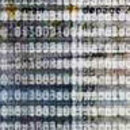
Every Day is Exactly the Same.
, by Frank HellenkampWe live in a box.
Or better — we are living in a number of boxes. Small and big, open and closed, some of them have holes, others are dark like in a »maulswurfshügel«.
One of these boxes is my computer. It has a small hole through which one can see the world — it is something people call the world wide web — but when you think about it, it is just a number of other boxes you look into.
My box.
Everydayisexactlythesame.net is an attempt to visualize my own box. Every five minutes a screenshot is automatically taken. And at the end of the day an average picture is computed for the respective day.
Here an example for the average picture of January 1st, 2009 — a day I was busy with Flash (animation) and engrossed in several websites but still found the time for a game of The World of Goo.
Graphically, it would not get you very far if you just took an average picture — all you would have is a rather vague grey — that is why several versions of the same picture are calculated:

average

equalize

hard-light

multiply
Automation
In order to facillitate the whole thing all tasks are automated via various bash scripts which are regularly executed via Cronjob.
First step: Screenshots
Every five minutes a screen shot is automatically created for my MacBook. Furthermore an image of the outer world is shot with the help of the built-in iSight camera.
#!/bin/bash
savedir="~/Projects/autoscreens"
fdate=`date "+%Y%m%d"`
ftime=`date "+%H%M"`
filescreen="$savedir/$fdate/screen_$ftime"
filereal="$savedir/$fdate/real_$ftime"
mkdir -p $savedir/$fdate/
if [ -f $savedir/nocapture ]; then
# abort if screencapture is denied
exit
else
# capture screen
screencapture -m "${filescreen}_01.png"
# capture iSight-shot
/opt/local/bin/isightcapture -t jpg "${filereal}_01.jpg"
fi
Second step: Automatic synchronization with the server
This data is automatically synchronized on a daily basis with a Linux server via rsync. Than the server executes all further tasks without actively involving the MacBook.
#!/bin/bash
cd /var/transfer/autoscreens
fdate=`date "+%Y%m%d"`
# test if macbook is reachable in local network
if ping -q -c3 -w3 macbook.local > /dev/null; then
# sync autoscreens
rsync -avz \
-e "ssh -i ~/.ssh/id_rsync" \
--exclude "autoscreens/$fdate" \
--exclude "autoscreens/.git" \
--exclude "autoscreens/sorted" \
--exclude "autoscreens/monthly_temp" \
\
user@macbook.local:/Users/user/Projects/autoscreens \
\
/var/transfer/
if [ $? -eq 0 ]; then
# process images with a low priority
nice -n 20 ./process
nice -n 20 ./process_real
# sort and upload images
nice -n 20 ./sort
# process monthy videos
nice -n 20 ./monthly
fi
fi
Third step: Processing the images
The processing takes place via convert from the ImageMagick suite and involves several variations.
#!/bin/bash
#
# processing script for everydayisexactelythesame.net
# (c) copyright 2008-2009 Frank Hellenkamp [jonas@depagecms.net]
# level image
level() {
if [ ! -f ${1}_level.jpg ]; then
convert \
${1}.jpg \
-level 20%,80% \
${1}_level.jpg
fi
}
# equalize image
equalize() {
if [ ! -f ${1}_equalize.jpg ]; then
convert \
${1}.jpg \
-equalize \
${1}_equalize.jpg
fi
}
# filter image once
filter_single() {
if [ ! -f ${1}_${2}_a.jpg ]; then
echo --- filtering with ${2}
convert \
${1}.jpg \
+clone -compose ${2} -composite \
${1}_${2}_a.jpg
level ${1}_${2}_a
equalize ${1}_${2}_a
fi
}
# filter image twice
filter_double() {
if [ ! -f ${1}_${2}_b.jpg ]; then
echo --- filtering with ${2}
convert \
${1}.jpg \
+clone -compose ${2} -composite \
+clone -compose ${2} -composite \
${1}_${2}_b.jpg
level ${1}_${2}_b
equalize ${1}_${2}_b
fi
}
if [ -f process.lock ]; then
exit
fi
touch process.lock
for day in 200?????; do
fdate=`date "+%Y%m%d"`
if [ $day != $fdate ]; then
options="-limit memory 384mb -limit map 384mb"
temppath="/tmp/autoscreens/${day}_temp"
outputpath="${day}_processed"
mkdir -p $outputpath
output="${outputpath}/average_${day}_01"
if [ ! -f ${output}.jpg ]; then
echo " "
echo processing screen for $day:
mkdir -p $temppath
# resize images to the same size
# regardless if they are captured from the
# build in screen or the external bigger
# screen
cd $day
for file in screen_*.png; do
convert \
$file \
-resize 936x624! \
$temppath/$file
done
cd ..
# calculate average for images of one day
convert $options \
$temppath/screen_*.png \
-average \
${output}.jpg
rm -r $temppath
fi
# level and equalize image
level $output
equalize $output
# pass thru all filters
for filter in \
"multiply" \
"overlay" \
"color-burn" \
"hard-light"
do
filter_single $output $filter
filter_double $output $filter
done
fi
done
rm process.lock
As you can see, through this process more than just the four images are generated. As these four images are generally the most expressive and aesthetic variants it is only those that are
shown online.
Fourth step: Publishing online
In a last step all new images are uploaded to the online server and can be seen directly under everydayisexactlythesame.net. Thumbnails and the images for the yearwall are only computed
on demand and are cached locally.
A small hint for those who are technically minded:
The scripts are not yet up optimized in any way. However: /tmp is mounted as tmpfs in RAM on this specific Gentoo Linux installation, so access is fast and — what is more important — only those images that are subsequently needed will be saved on the hard disc.